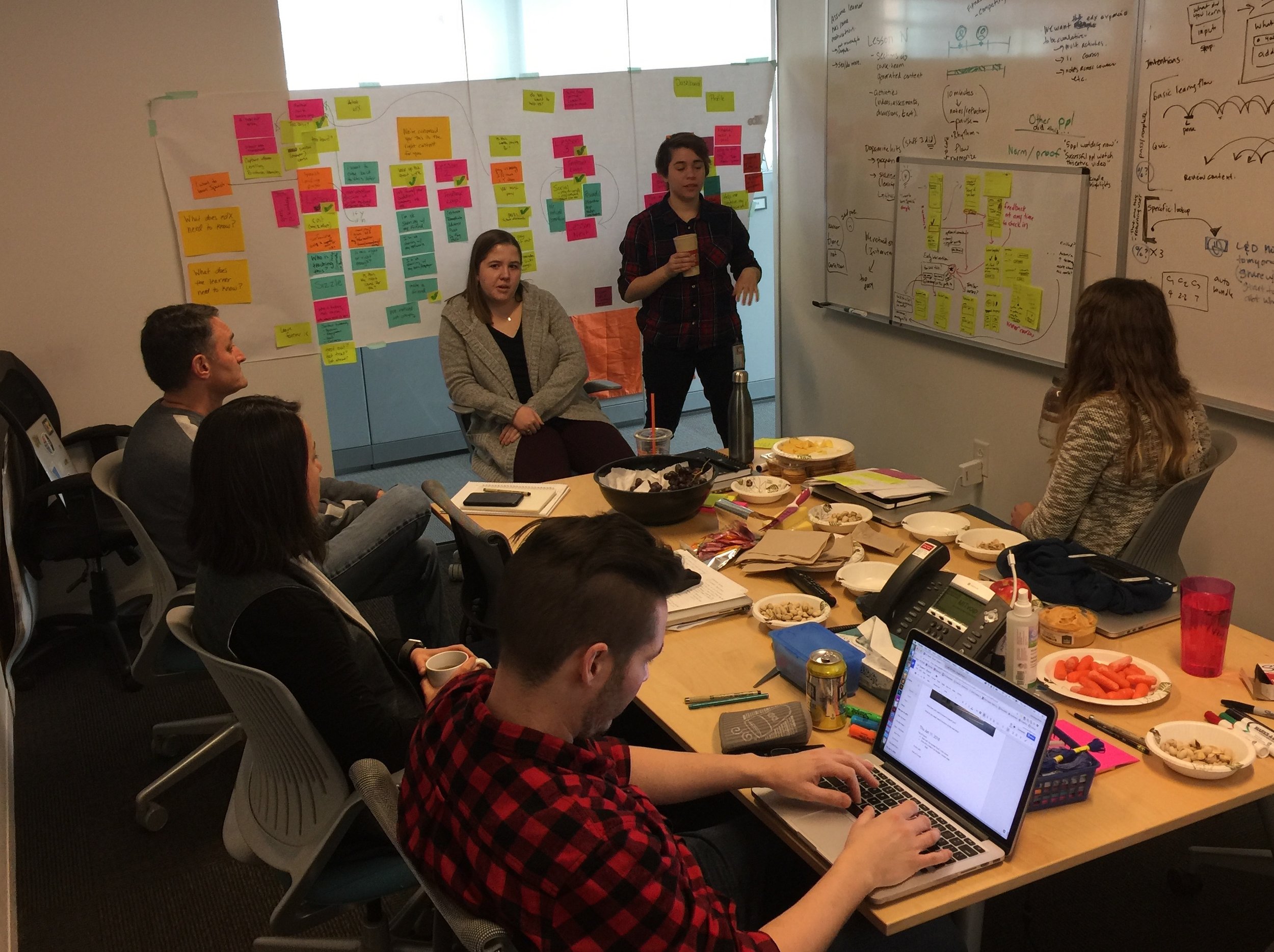9. Experimenting to Find the Sweet Spot of Action with Alyssa Boehm
How can organizations and individuals experiment with change in a way that reduces risk and prevents the “fixedness” monster from keeping them stuck? What’s involved in prototyping, testing, and adapting a raw – and perhaps crazy – product and service concept into something that actually appeals to customers? How can individuals take incremental steps toward change?
In this episode, we focus on the experimentation phase of change for both organizations and individuals. Midway through, we’ll hear from master experimenter, Alyssa Boehm. She describes the various methods she and her team use to prototype, test, and adapt new product concepts so as to increase the likelihood that the customer will like and benefit from them.
Listen for:
• Why taking little bits of ideas and trying them out with customers – and internal planners – is a smart way to reduce risk.
Ideating / prototyping can be messy, but colorful. Make sure you have a notetaker capturing every word.
• Where the “sweet spot” of change sits.
• What practical strategies individuals can take to keep “fixedness” at bay take along their road to change.
• How borrowing ideas / practices from other industries is a strong way to expand thinking.
• How narrowing your thinking on the most basic thing you can create – the “dumb idea” – can actually spur innovation versus focusing on the most elaborate thing.
• Why crude prototypes can yield just as much feedback as the elaborate prototype.
“Prototyping” doesn’t mean “perfect.” “Crude” can be a beautiful thing.
• How drawing / sketching elicits greater clarity of information than conversation.
• Why the belief that failure is a bad thing needs to shift to seeing failure as a gift.
• How working from where you want to wind up informs prototyping and experimentation.
• Why it’s important to get leadership’s expectations – the results they want – upfront in the design process.
After listening to the episode:
For individuals: Look at a situation where you are currently stuck. Based on the strategies you heard early in the episode – e.g., “piloting,” “sidewalk,” “paint me a picture, sign me a song” etc. – write down three incremental ways you could experiment with change. Put those methods into a hat, and pull one out. Apply that method to your stuck situation, and map out your first step!
For organizations: Make an experimentation mini-plan. Write a little schedule that shows you conducting 3 “dumb” experiments – words, paper mockup, simple model or prototype. Make sure you schedule time to get input and make changes at each stage. As Alyssa says, this doesn’t have to take much time, but if you plan for it, you are more likely to feel like it is part of the process and less like it is an add on when you fail.


